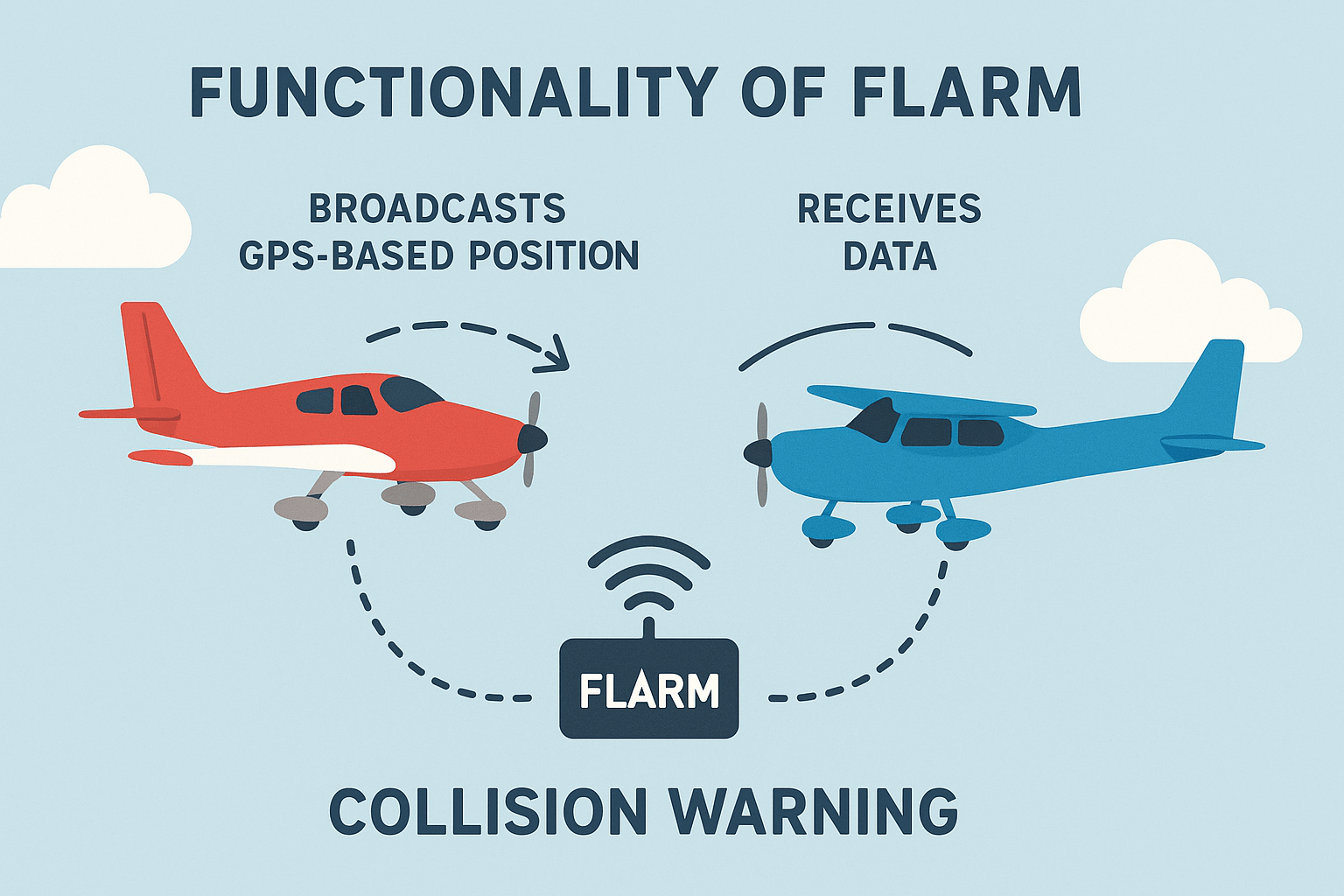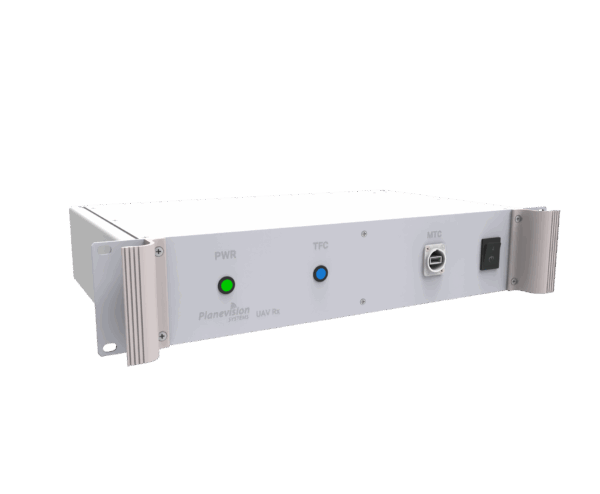FLARM is a compact, intelligent collision avoidance and situational awareness system originally developed for gliders and light aircraft, and now widely adopted in helicopters, UAVs, and even ground vehicles in industrial environments. FLARM works by broadcasting an aircraft’s (or vehicle’s) position, velocity, and flight path over short-range radio, enabling nearby equipped units to predict potential conflicts and issue real-time alerts.
Originally designed to fill the gap left by radar and ADS-B in low-level, VFR airspace, FLARM provides a decentralized, low-cost, and privacy-conscious solution to traffic awareness and deconfliction—particularly in areas where conventional air traffic control is unavailable.
How It Works
Each FLARM unit uses GNSS (e.g., GPS) to determine position, altitude, and motion, which it then transmits over a license-free ISM band (typically 868 MHz in Europe or 915 MHz in North America). A built-in collision prediction algorithm continuously computes possible future trajectories of both the ownship and received targets, triggering audio and visual alerts if a collision risk is detected.
Key transmission data includes:
- 3D position and velocity
- Heading and rate of climb/descent
- Aircraft or asset ID (can be anonymized)
- Optional intent (planned trajectory or destination)
The communication range is typically 3–10 km, depending on antenna quality and line-of-sight.
Broader Ecosystem – Other Compatible and Competing Systems
FLARM is part of a growing ecosystem of airborne traffic awareness technologies, many of which use different protocols and frequencies. Some of these systems are partially or fully interoperable with FLARM, while others require integration via ground relays or bridging devices:
- PilotAware: A UK-developed system aimed at general aviation. It detects and broadcasts over both FLARM and ADS-B frequencies, and can bridge multiple traffic formats including Mode S and FLARM, increasing awareness of nearby non-cooperative targets via ground stations.
- ADS-L (Airborne Dependent Surveillance – Local): An emerging EASA standard designed for low-cost electronic conspicuity, particularly for drones and light aircraft. ADS-L supports encrypted broadcasts and is expected to be compatible with certain FLARM-based systems under a harmonized framework.
- OGN (Open Glider Network): A community-driven network that aggregates live FLARM, FANet, and other telemetry data via a network of ground receivers. OGN tracks aircraft in real time and provides online visibility through platforms like LiveTrack24 and GliderNet. While FLARM data is integrated, full protocol-level compatibility depends on device configuration.
- FANet (Flying Ad-Hoc Network): A lightweight broadcast system developed for paragliders, hang gliders, and drones. It uses similar frequencies and packet structures to FLARM but with different protocols. FANet devices can sometimes be integrated with FLARM via dual-protocol transceivers or OGN bridges.
Together, these systems form a diverse ecosystem aimed at increasing electronic conspicuity and airspace safety for all types of low-level aviation.
Beyond Aviation – FLARM in Industrial Tracking
FLARM is not limited to aircraft. In recent years, it has been successfully adopted for ground-based asset tracking in mining, logistics, and construction. For example, ore trucks in copper mines use FLARM to broadcast their positions and receive alerts from nearby vehicles, reducing collision risk in dust-filled or visually obstructed environments. The same benefits apply to bulldozers, forklifts, and other heavy equipment operating in dynamic, high-risk areas.
Conclusion
FLARM provides an effective, decentralized solution for real-time collision avoidance, situational awareness, and asset tracking—both in the air and on the ground. While alternative systems like PilotAware, ADS-L, OGN, and FANet offer overlapping functionality, they often target specific user groups or regulatory frameworks. Whether integrated natively or bridged via ground networks, FLARM remains a cornerstone technology for safe operation in complex, radar-free environments.d technologies, we recognize the significant contribution of FLARM to enhancing flight safety.
Our products for FLARM
-
DroneTRack
DroneTRack is a cost-efficient, professional receiver ground station tailored for monitoring position and other data from UAVs and small aircraft.


